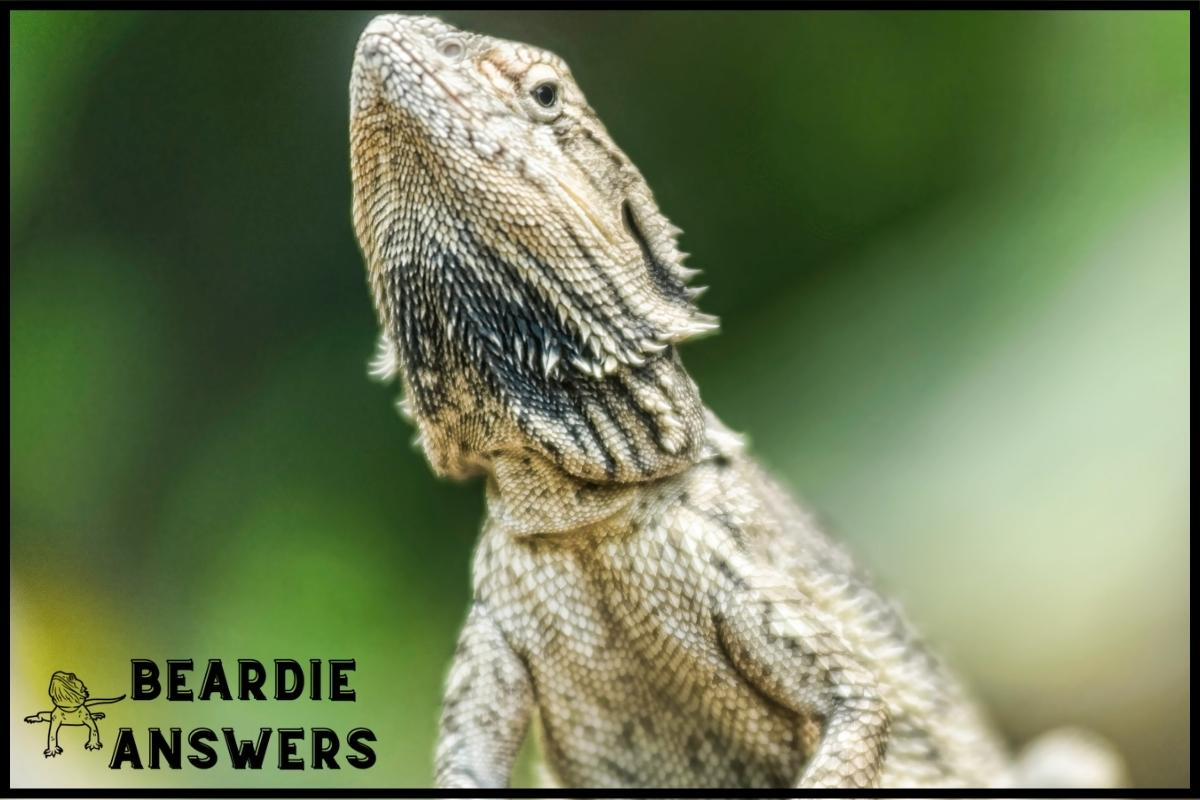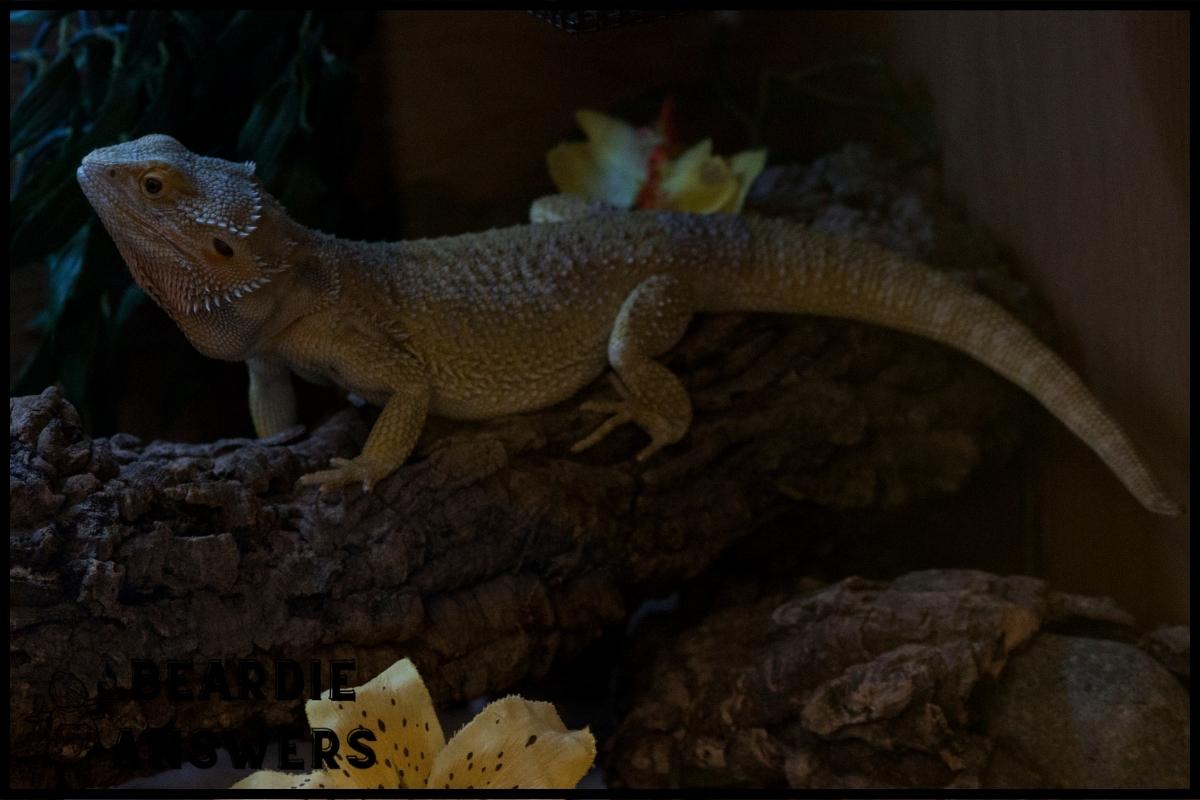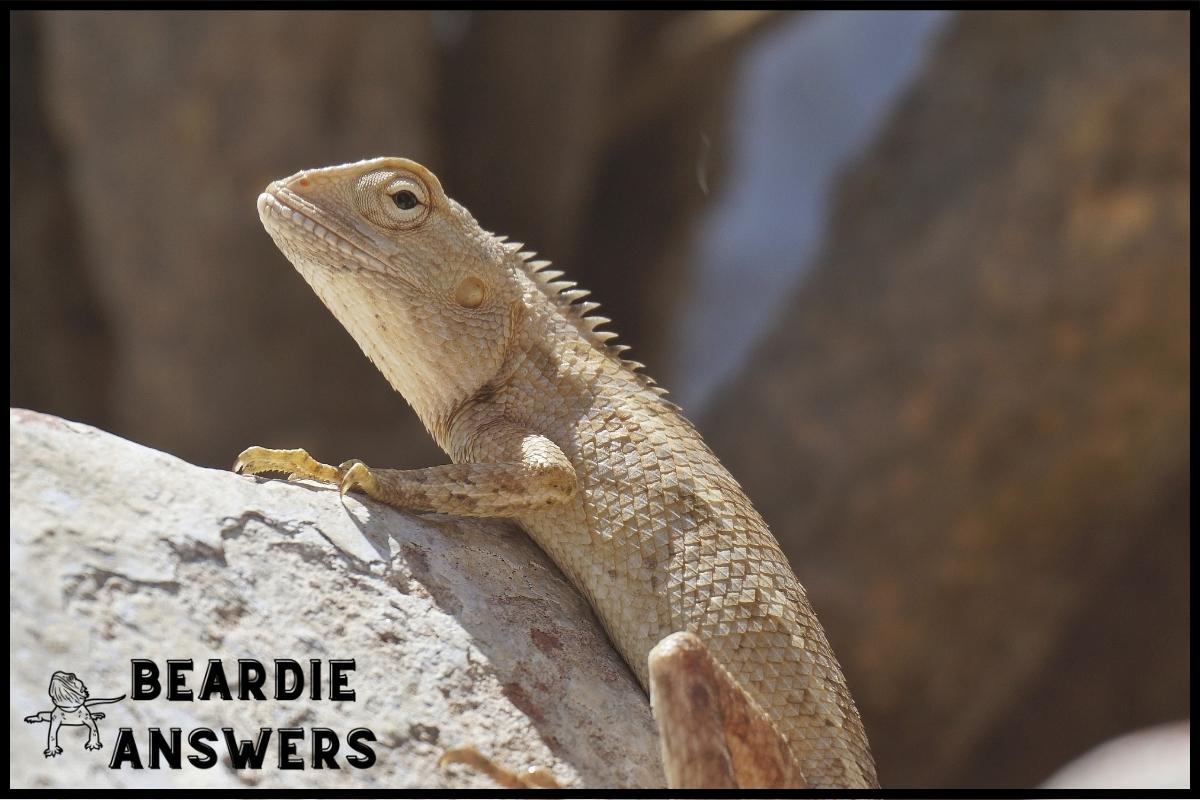Bearded dragons can grow up to 24 inches in length and weigh up to 1-2 pounds, depending on their sex and genetic makeup. It’s important to provide a spacious and stimulating enclosure for them to thrive and reach their full potential.
What You'll Learn
Bearded Dragon Growth Rate
Once upon a time, there was an ambitious bearded dragon who wished to grow bigger and stronger than any other of his kind. He practiced hard every day, controlling the temperature around him and following through with rigorous shedding cycles. But no matter how much he worked out or how many times he shed his skin, he still seemed to stay the same size.
The little dragon thought that if only he could figure out what it took for others to become so big and strong, then maybe he too could reach those heights someday.
So one night, amidst stars twinkling in the sky, he set off on a journey to find the answer – looking everywhere from forests and fields to mountains and streams.
Finally after months of searching, the dragon stumbled across some wise elders deep within a distant cave who had knowledge of all things related to growing bigger and stronger. After hearing their advice, the dragon soon realized that factors such as diet, exercise, environment and genetics all had a role in determining growth rate…
Factors Affecting Growth
Bearded dragons grow to a substantial size, reaching up to 24 inches in length and weighing 1-2 pounds. As with most animals, their growth is affected by various factors including genetics and environmental conditions.
Genetic factors play an important role in how big a bearded dragon will get. For instance, some species of bearded dragons can reach larger sizes than others due to genetic differences. Additionally, the age at which they are born will also affect their final size since younger beardies tend to be smaller when compared to adults.
Temperature control is another key factor that impacts the growth of bearded dragons. They require specific temperatures during different stages of life in order for them to thrive. Both too high or too low temperatures can lead to stunted growth if not corrected as soon as possible.
These two elements – genetics and temperature control – should be taken into consideration when looking at how big a bearded dragon can get.
A healthy diet and proper care are essential for any pet reptile’s well-being, regardless of their size or age. With adequate nutrition and ideal environmental conditions, it’s possible for your beardie to reach its full potential growth over time.
Transitioning now into diet and nutrition, there are several dietary options available for these reptiles…
Diet And Nutrition
Although bearded dragons are omnivorous, meaning they eat both plants and animals, their diet is more heavily reliant on insects than anything else. As such, it’s important to understand the dietary needs of these reptiles in order to provide them with a balanced diet that meets all their nutritional requirements.
One of the most important dieting strategies for keeping your dragon healthy is providing them with a good variety of insects and vegetables in their meals. A combination of crickets, mealworms, wax worms, as well as dark leafy greens like collard or mustard greens should make up the main part of a bearded dragon’s daily intake.
In addition to insects and vegetables in its diet, an adult bearded dragon should also receive occasional supplementation with calcium powder or multivitamins mixed into food once per week. This helps ensure that your pet gets all the necessary nutrients for optimal health including vitamins D3 and A which play critical roles in bone growth and overall wellbeing. It is recommended that you consult a veterinarian before giving any supplements to your reptile companion.
Creating an environment that closely mimics their natural habitat can help keep your beardie happy and playful while ensuring they get enough exercise throughout the day too!
Environmental Requirements
Now that you have a better understanding of the diet and nutrition needs for your bearded dragon, it’s time to discuss their environmental requirements. These include providing them with appropriate lighting needs and temperature control.
Bearded dragons need full-spectrum lighting in order to create an environment similar to what they would experience in nature. This could include:
- A basking light bulb
- An ultraviolet (UVB) bulb
- A ceramic heat emitter
These should be set up so that there is both hot and cool areas within the enclosure; this will give your pet plenty of places to thermoregulate themselves appropriately throughout the day.
Additionally, since reptiles are cold blooded, it’s important to provide them with adequate temperature control using heating pads or other sources of warmth as needed depending on their species’ specific needs.
With these basics taken care of, you’re well on your way towards giving your pet a happy home filled with all their necessary nutritional and environmental needs! Now let’s take some time to talk about common health issues associated with owning a bearded dragon.
Common Health Issues
Bearded dragons can be prone to certain health issues, especially if they are not cared for properly. Temperature fluctuations, which may result from an inadequate or improperly sized enclosure, can cause a variety of illnesses in bearded dragons. This is why it’s important to ensure that their habitat meets the necessary requirements and maintains appropriate temperatures.
Additionally, improper diet and nutrition can lead to problems such as metabolic bone disease, calcium deficiency, and even stunted growth. Overall, providing your dragon with the right type of environment and food will help keep them healthy and happy for years to come.
It is also beneficial to monitor your pet regularly so any potential issues can be caught early on before they become more serious. With proper care and attention, most common health concerns associated with bearded dragons are easy to avoid.
Having knowledge about handling and care considerations is essential when it comes to keeping your beardie safe and healthy. Knowing how often you should handle your dragon as well as what type of supplements may benefit them can go a long way towards extending their lifespan.
Handling And Care Considerations
Though bearded dragons are relatively easy to care for, there are some important handling and care considerations that should be taken into account.
In particular, it is critical to ensure the dragon has access to a suitable enclosure setup with adequate housing requirements.
The size of the enclosure needs to be large enough so that the bearded dragon will have plenty of room to move around and explore. A good rule of thumb is 10 gallons per foot—meaning an adult 24” beardie would require at least a 240-gallon tank or larger.
The flooring of the terrarium should also provide ample traction as their claws can slip on smooth surfaces like glass, making climbing difficult.
Additionally, you need to make sure your dragon has access to proper lighting and heating elements in order to maintain a healthy environment. UVB light helps promote vitamin D3 production while basking lights help regulate body temperature during cold days; both are essential components of any well-rounded habitat setup.
Bearded Dragons prefer temperatures between 80°F – 95°F (26°C – 35°C) during the day, dropping down no lower than 70°F (21°C) overnight.
Conclusion
In conclusion, bearded dragons can grow up to 24 inches in length and weigh 1-2 pounds. With their proper care and environment, they can reach this size in a relatively short period of time.
For example, my uncle’s dragon reached full adult size within just two years with the right diet and regular vet visits. Proper nutrition is key to keeping your pet healthy and active while providing an adequate habitat helps promote growth as well as prevents common health issues from arising.
By following these steps, you can ensure that your beardie grows big and strong!

Hi! My name is Bryan, I am the “one behind the words” here are BeardieAnswers.com. I believe that providing quality care and nutrition is the best way to ensure the health of your pet. Every beardie is special and deserves the best care and attention. If you have questions about your bearded dragon, please don’t hesitate to ask! View My Full Author Page




